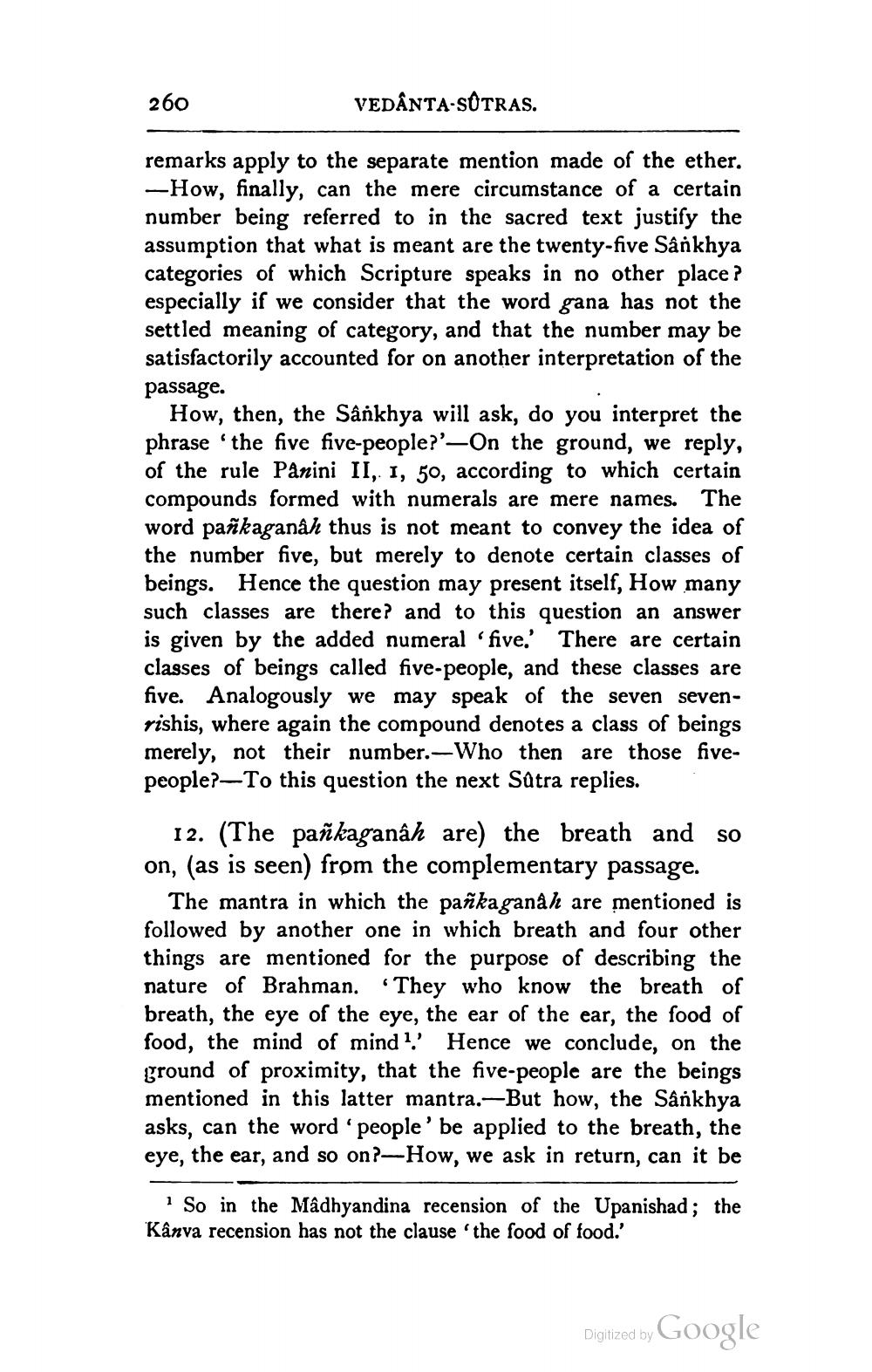________________
260
VEDÂNTA-SOTRAS.
remarks apply to the separate mention made of the ether. -How, finally, can the mere circumstance of a certain number being referred to in the sacred text justify the assumption that what is meant are the twenty-five Sânkhya categories of which Scripture speaks in no other place? especially if we consider that the word gana has not the settled meaning of category, and that the number may be satisfactorily accounted for on another interpretation of the passage.
How, then, the Sankhya will ask, do you interpret the phrase 'the five five-people?'—On the ground, we reply, of the rule Panini II, 1, 50, according to which certain compounds formed with numerals are mere names. The word pañkaganâh thus is not meant to convey the idea of the number five, but merely to denote certain classes of beings. Hence the question may present itself, How many such classes are there? and to this question an answer is given by the added numeral 'five.' There are certain classes of beings called five-people, and these classes are five. Analogously we may speak of the seven sevenrishis, where again the compound denotes a class of beings merely, not their number.-Who then are those fivepeople?—To this question the next Satra replies.
12. (The pañkaganâh are) the breath and so on, (as is seen) from the complementary passage.
The mantra in which the pañkaganah are mentioned is followed by another one in which breath and four other things are mentioned for the purpose of describing the nature of Brahman. They who know the breath of breath, the eye of the eye, the ear of the ear, the food of food, the mind of mind 1.' Hence we conclude, on the ground of proximity, that the five-people are the beings mentioned in this latter mantra.-But how, the Sankhya asks, can the word 'people' be applied to the breath, the eye, the ear, and so on?-How, we ask in return, can it be
1 So in the Mâdhyandina recension of the Upanishad; the Kânva recension has not the clause 'the food of food.'
Digitized by Google




